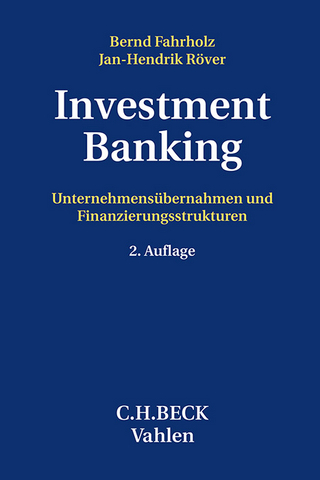
Financial Markets and Institutions
Pearson Education Limited (Verlag)
978-0-273-70919-0 (ISBN)
With its clear and accessible style, Financial Markets and Institutions will help students make sense of the financial activity that is so widely and prominently reported in the media. Looking at the subject from the economist’s perspective, the book takes a practical, applied approach and theory is covered only where absolutely necessary in order to help students understand events as they happen in the real world. This fifth edition has been thoroughly updated to reflect the changes that have occurred in the financial system in recent years.
Key Features
· New! Chapter 12 Financial Market Failure and Financial Crisis puts forward arguments concerning for example, the ability of small firms to borrow, the problems of financial exclusion and inadequate long-term saving and the tendency in financial markets to bubbles and crashes.
· New! Thoroughly updated to include new figures and recent legislative and regulatory changes.
· Provides a comprehensive coverage of the workings of financial markets.
· Contains sufficient theory to enable students to make sense of current events.
· Up-to-date coverage of the role of central banks and the regulation of financial systems.
· Focuses on UK and European financial activity, context and constraints.
· Offers a wealth of statistical information to illustrate and support the text.
· Extensive pedagogy includes revised boxes, illustrations, keywords/concepts, discussion questions, chapter openers, chapter summaries and numerous worked examples.
· Frequent use of material from the Financial Times.
· Regularly maintained and updated Companion Website containing valuable teaching and learning material.
Financial Markets and Institutions will be appropriate for a wide range of courses in money, banking and finance. Students taking financial markets and institutions courses as part of accounting, finance, economics and business studies degrees will find this book ideally suited to their needs. The book will also be suitable for professional courses in business, banking and finance.
Peter Howells is Professor of Monetary Economics at the University of the West of England.
Keith Bain is formerly of the University of East London where he specialized in monetary economics and macroeconomic policy.
1. Introduction: the financial system
1.1 Financial Institutions
1.1.1 Financial institutions as firms
1.1.2 Financial institutions as ‘intermediaries’
1.1.3 The creation of assets and liabilities
1.1.4 Portfolio equilibrium
1.2 Financial markets
1.2.1 Types of product
1.2.2 The supply of financial instruments
1.2.3 The demand for financial instruments
1.2.4 Stocks and flows in financial markets
1.3 Lenders and borrowers
1.3.1 Saving and lending
1.3.2 Borrowing
1.3.3 Lending, borrowing and wealth
1.4 Summary
Questions for discussion
Further reading
2. The financial system and the real economy
2.1 Lending, borrowing and national income
2.2 Financial activity and the level of aggregate demand
2.2.1 Money and spending
2.2.2 Liquid assets and spending
2.2.3 Financial wealth and spending
2.3 The composition of aggregate demand
2.4 The financial system and resource allocation
2.5 Summary
Questions for discussion
Further reading
Answers to exercises
3. Deposit-taking institutions
3.1 The Bank of England
3.1.1 The conduct of monetary policy
3.1.2 Banker to the commercial banking system
3.1.3 Banker to the government
3.1.4 Supervisor of the banking system
3.1.5 Management of the national debt
3.1.6 Manager of the foreign exchange reserves
3.1.7 Currency Issue
3.2 Banks
3.3 Banks and the creation of money
3.3.1 Why banks create money
&nbs
| Erscheint lt. Verlag | 27.2.2007 |
|---|---|
| Verlagsort | Harlow |
| Sprache | englisch |
| Maße | 190 x 245 mm |
| Gewicht | 760 g |
| Themenwelt | Wirtschaft ► Betriebswirtschaft / Management ► Finanzierung |
| ISBN-10 | 0-273-70919-4 / 0273709194 |
| ISBN-13 | 978-0-273-70919-0 / 9780273709190 |
| Zustand | Neuware |
| Haben Sie eine Frage zum Produkt? |
aus dem Bereich


